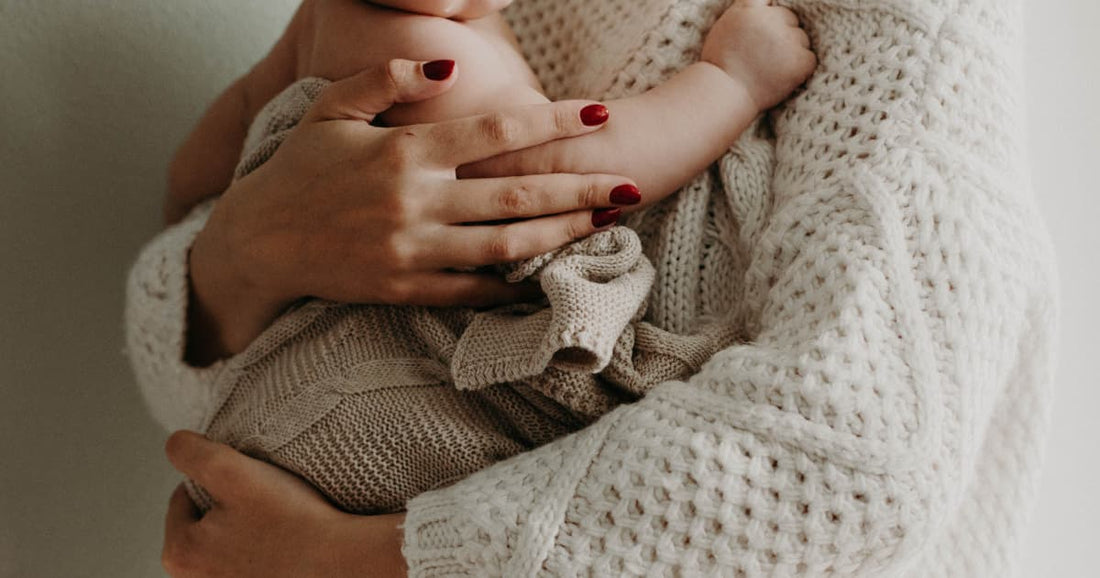
A Mini Guide to Using Breast Pads
Share
Breast pads are the kind of product that you don’t take notice of until you need them, meaning that when the time comes to purchase as a new mother, you may not know what it is you need to look out for.
Breast pads, also known as nursing pads, not only protect your dignity and save you from milk leaking out and onto your clothing but can also protect your nipples from rubbing on clothing as well. In short, they are an integral part of any new mum’s shopping list, and in this blog, we will be helping to guide you towards the best breast pads on the market to meet your needs.
What Are Breast Pads and Why Are They Needed?
Concealed within your bra, breast pads are not obvious - nor do they alter the shape or size of your breasts. They are simply there to protect your dignity during late pregnancy and as a new mother, when milk leakage is simply a part of your everyday life.
Made with optimum absorbance and a soft touch finish which means you won’t even notice they’re there; breast pads stop milk from leaking through your bra and into your clothing. Before we dive into the benefits of breast pads and how best to use them, first a little biology behind the reason for these little pads.
During the end of pregnancy and when your baby is a newborn, your body is still getting used to the process of producing the right amount of milk to feed your baby.
Until a routine is established between your baby and your body, your breasts are likely to produce and release milk without warning - causing unexpected leakage which can lead to stains on your clothing. Breast pads are there to provide a barrier for any and all unexpected leaks.
The Benefits of Breast Pads

When used properly, breast pads are hygienic and safe, and the perfect way to keep your clothes clean and stain-free. Not only that but they are easy to conceal under clothing and also provide your nipples with a soft and padded cover to prevent clothes from rubbing and making already sore nipples even more tender.
Other benefits heralded by breastfeeding and new mums include:
• Breast pads can help to hold your breasts in place and present a refined finish all day long• Breast pads don’t just protect you from the embarrassment of leaking milk - they also protect your clothes from staining
• Soft breast pads can provide your breasts with some relief after breastfeeding, giving your nipples time to recover
How to Use Breast Pads
Breast pads are super easy to use, and whether you choose reusable or disposable breast pads the results are largely the same - though reusable pads are kinder to the environment and are popular with women due to the softening of the pad over time and with every wash.
Using your breast pads can be made simpler by following these steps:
Step one: Prepare your nipple by cleaning and drying it and adding a small amount of nipple cream if necessary to provide relief and to ease cracking.
Step two: Remove the adhesive backing (if using a disposable breast pad)
Step three: This is where disposable and reusable pads differ. Those which are disposable are placed directly on the breast, while those which are reusable can be secured inside your bra cup.
Step four: Replace the breast pad with a new one once the fixed one is wet.
Remember, to avoid bacteria you must always dry a breast pad thoroughly before fitting it to your breast or inside your bra cup. Reusable breast pads in particular are best washed thoroughly and dried in direct sunlight to benefit from natural anti-bacterial properties.
Tips for Choosing the Best Breast Pads
There are a variety of options on the market, each boasting their own advantages and challenges.
While disposable breast pads are convenient, discreet, and are particularly useful when you need to wash your reusable pads thoroughly, washable and reusable breast pads offer a high level of cost efficiency and are environmentally friendly as well as kinder to your skin.
No matter which type of breast pad you decide to use, keeping them fresh and clean is crucial if you want to protect your breasts, reduce irritation, and maintain a healthy environment for your baby to feed from.
